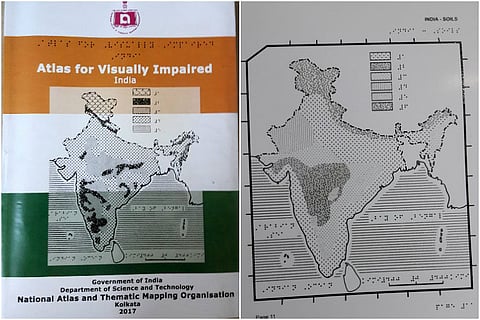India unveils a braille atlas for the visually impaired, first of its kind in the world
India's over 28 million visually impaired people now have the option to study and understand the Indian geographical contours in detail, without having to rely only on literature.
A braille atlas, released by the government earlier this year, aims to "empower" them with the "wealth of knowledge".

Titled "Atlas for Visually Impaired (India)", it is said to be the first mass produced braille atlas in the world. "We are the only organisation to prepare large volumes of low cost braille atlases. We are pioneers in this case," Dr Tapati Banerjee, Director of National Atlas and Thematic Mapping Organisation (NATMO), told The News Minute.
Prepared by the NATMO under the Department of Science & Technology, the braille atlas has 20 maps of India on various themes. These include drainage system, road and railway network, agricultural soil, river system, metropolitan cities and are accompanied by map key and reference in braille script.
.jpg?w=640&auto=format%2Ccompress)


In the braille atlas, which is manufactured using silk screen printing, maps are raised and embossed with simple lines and point symbols to facilitate its users to realise the location and area coverage, which is easily distinguishable in terms of shapes and textures.
"This will be very useful to visually challenged persons. Before starting work on the atlas, we spoke to several blind societies in the country, like those in Telangana, Andhra Pradesh, Tamil Nadu and Gujarat and they told us that such an atlas was much needed," Dr Tapati said.

Minister for Science and Technology Harsh Vardhan releasing the book.
According to the government, over 50 lakh visually challenged persons in India mainly hail from low-income groups and NATMO's aim is to make scientific information available to them in a cost-effective manner.
Dr Tapati said that the cost of the book is yet to be fixed by the government, and that at present it is being given for free to people.
NATMO is also working on a world atlas for the visually impaired.

